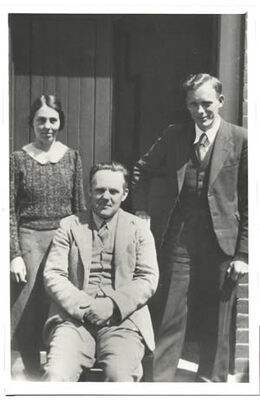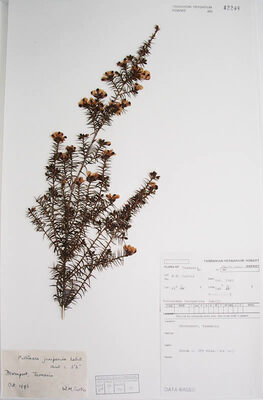Dr Winifred CurtisThe grand lady of Tasmanian botany
University of Tasmania Career
Winifred has conducted her research without fanfare but with humility and a dedication to precision: in her view, her considerable achievements are simply a job that needed to be done and a foundation for others to build upon.
Gintaras Kantvilas tribute to Winifred Curtis, 2005 exhibition notes
Demonstrator & Research Scholar
Soon after moving to Hobart Winifred gained part-time employment at the University as a Demonstrator and Research Scholar in the Biology Department. She was the second woman ever to be appointed to the University academic staff and the only one at that time.
Assistant Lecturer
In 1942, Winifred was offered and accepted a full-time appointment as Assistant Lecturer in Biology at the University of Tasmania. Later in 1945, when the disciplines of Botany and Zoology were separated, she was appointed Lecturer in Botany.
Pioneering botanical researcher
Her botanical research in Tasmania began with the study of chromosome numbers in Dianella and certain shrubby legumes.
She published the first record of polyploidy in an Australian native plant in the paper: Curtis, Winifred M 1943 , 'Variation in Pultenaea juniperina Labill.' , Papers and Proceedings of the Royal Society of Tasmania , pp. 197-198.
I promptly wrote to London to know if I could do PhD work here and they wrote and said yes, they finally approved the University of Tasmania as a fitting place for me to work but it would be necessary for me to attend in London for an oral examination. My interests here were on polyploids
Winifred Curtis
In 1950 on completion of her PhD thesis Winifred travelled to London to have an oral examination at the University of London.
Senior Lecturer
In 1951 Winifred became Senior Lecturer in Botany and in 1956 Reader in Botany, the most senior position held by a woman at the University of Tasmania. Winifred also acted as Head of the Department on several occasions.
In 1966 Winifred retired from the Botany Department and was appointed Honorary Research Fellow in Botany. She maintained this link and was an Honorary Research Associate in the Department of Plant Science in 1998. After retirement she continued to work on the Student’s Flora, being based at the Tasmanian Herbarium where she was an Honorary Botanist.
- Listen to: the Interview with Professor V.V. Hickman and Dr Winifred Curtis by John Roberts, University of Tasmania, Hobart, Tasmania, 5 December 1978

